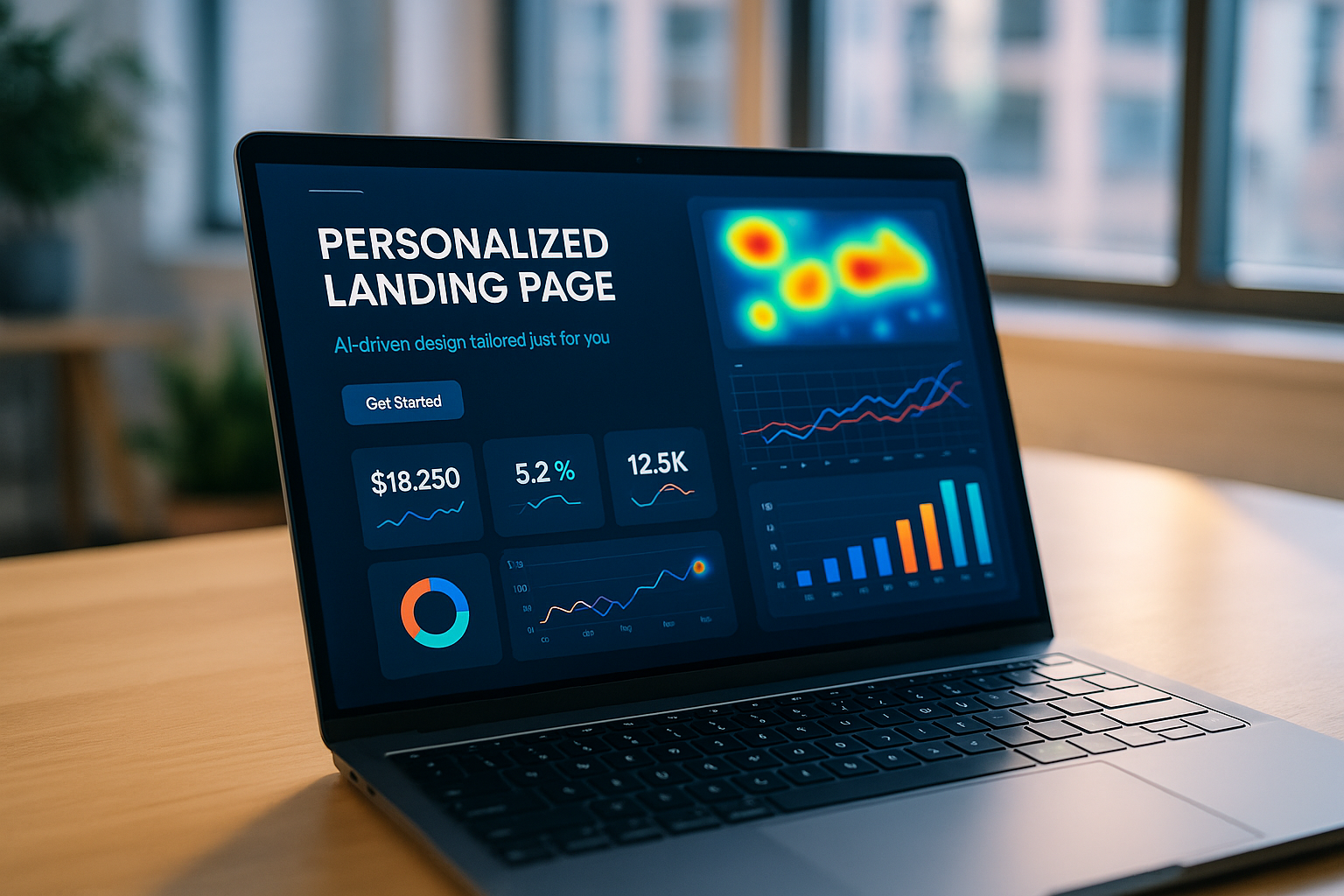The digital marketing world is shifting fast and at the heart of it is AI-driven personalization. With online users demanding faster, more relevant experiences, businesses can no longer rely on generic landing pages. Instead, AI personalization is transforming how brands design, test, and optimize their landing pages for maximum conversions.
In this article, we’ll explore:
- What AI personalization means for landing pages
- Why it’s becoming the norm in digital marketing
- Current and emerging trends for 2025
- How businesses can use these trends to boost performance
What is AI Personalization in Landing Pages?
AI personalization uses machine learning algorithms, behavioral analytics, and real-time data to customize landing page experiences for individual users. Instead of a “one-size-fits-all” page, AI dynamically changes:
- Headlines
- Product recommendations
- Call-to-action (CTA) text and placement
- Images, videos, and even color schemes
- Offers and discounts
This creates a relevant, tailored experience for each visitor, leading to higher engagement and conversions.
Why AI Personalization is Crucial for Landing Page Optimization
Consumer Expectations Have Changed
Today’s users want instant relevance. A Google study found that 63% of consumers expect brands to use their purchase history and preferences to personalize experiences.
Reduced Bounce Rates
When visitors see content tailored to their interests, they are less likely to leave without taking action.
Higher Conversion Rates
AI personalization enables micro-targeting, delivering the right message to the right person at the right time.
AI Personalization Trends in Landing Page Optimization (2025)
Real-Time Content Personalization
AI tools like Dynamic Yield, Adobe Target, and Optimizely can now adjust landing page content in real-time based on user behavior, location, device type, and even weather conditions.
Example:
If a user visits an e-commerce landing page from New York during winter, the page instantly highlights warm jackets instead of summer T-shirts.
Predictive Personalization
Instead of reacting to user actions, predictive personalization anticipates needs before they happen. AI analyzes past behavior and predicts what content or offer will likely convert a visitor.
AI-Powered A/B and Multivariate Testing
Traditional A/B testing can be slow, but AI automates the process by running multiple variations at once and instantly identifying winners. This shortens optimization cycles dramatically.
Voice Search & Conversational Landing Pages
With the rise of voice assistants, landing pages are adapting to conversational queries. AI chatbots integrated directly into landing pages now guide visitors, answer questions, and recommend products, just like a salesperson.
Hyper-Personalized Visuals
Instead of static hero images, AI now swaps visuals based on user demographics, location, and browsing history. This makes visitors feel like the landing page was designed just for them.
Personalized CTA Optimization
AI tools can modify call-to-action buttons in real-time, changing the text, color, or position based on user interaction patterns.
Sentiment-Driven Personalization
Advanced AI can detect sentiment from browsing patterns, social media behavior, or even live chat conversations. If a user seems hesitant, the landing page might highlight customer testimonials or trust badges to reduce friction.
How to Implement AI Personalization for Landing Pages
- Choose the Right AI Tool – Popular platforms include HubSpot CMS AI, Optimizely, Personyze, and Dynamic Yield.
- Define Key Audience Segments – Use analytics to group users by demographics, location, device, or intent.
- Map Out Content Variations – Prepare different headlines, CTAs, and offers for each segment.
- Test & Refine Continuously – AI can learn, but it still needs human oversight to align with brand goals.
- Ensure Privacy Compliance – Follow GDPR and CCPA rules when using personalization data.
The Future: Fully Automated AI Landing Pages
Looking ahead, we can expect:
- Landing pages that build themselves in real-time based on AI predictions.
- Deeper integration with CRM systems for hyper-relevant targeting.
- AI-generated design and copywriting, removing the need for manual updates.
Final Thoughts
AI personalization isn’t just a marketing trend, it’s the next standard in landing page optimization. Brands that embrace this shift will not only boost conversions but also create stronger connections with their audience.
By combining real-time personalization, predictive analytics, and automated testing, marketers can turn static landing pages into dynamic, conversion-driven experiences.

